Planning to visit Sicily, but one week is not quite enough? We’ve got a wonderful 2 weeks Sicily itinerary for you, giving you a good overview of what’s there to see and do on this wonderful island!
Would you like to explore with a local guide? Book one of these experiences all over Sicily!
We love booking tours with GetYourGuide – the company offers a variety of activities, flexible booking, and 24/7 support!
- Palermo: Street Food and History Walking Tour – best-selling tour for Sicily first-timers
- From Palermo: Monreale and Cefalù Half-Day Trip – a day trip to two stunning locations!
- Mount Etna: Guided Volcano Summit Hiking Tour with Cable Car – peek into the crater of the volcano
- Catania: City Highlights Walking Tour – see all of Catania’s main sights (including the fish market!)
- Etna: Wine Tasting and Food Tour – yep, learn all about food and wine in the shade of the volcano!
Ok, so you’ve planned to spend 2 weeks in Sicily. Can I just say, what a great idea? Most tourists visiting Italy bypass the island altogether, and the ones that do visit usually only spend a few days around the two main cities, Palermo and Catania.
Sicily is the largest island in the Mediterranean, and it has so many wonders to discover, that even with 14 days around Sicily you’ll barely scratch the surface. The island is vast and incredibly diverse – you’ll find lots of small towns and villages, beaches, mountains, historical sites and so much more.
Ah, and if you also decide to visit the Aeolian Islands, Lampedusa, or Pantelleria, you’ll discover even more to see and do!
This 2-week itinerary will take you all over Sicily – starting in Catania and ending in Palermo, the island’s two main airports. It’s quite packed and it will require you to change hotels every couple of days, so if you’d rather take your time, add a few days here and there!
2 Weeks Sicily Itinerary – Week 1
The first week of this 14 days itinerary of Sicily was already described in detail in our 7 Days Sicily Itinerary post, where you’ll also find practical info on how to plan your trip.
Below you’ll find a quick summary of what to do each day during your first week – always refer to the 7-day itinerary for more detailed info!
Day 1 – Catania
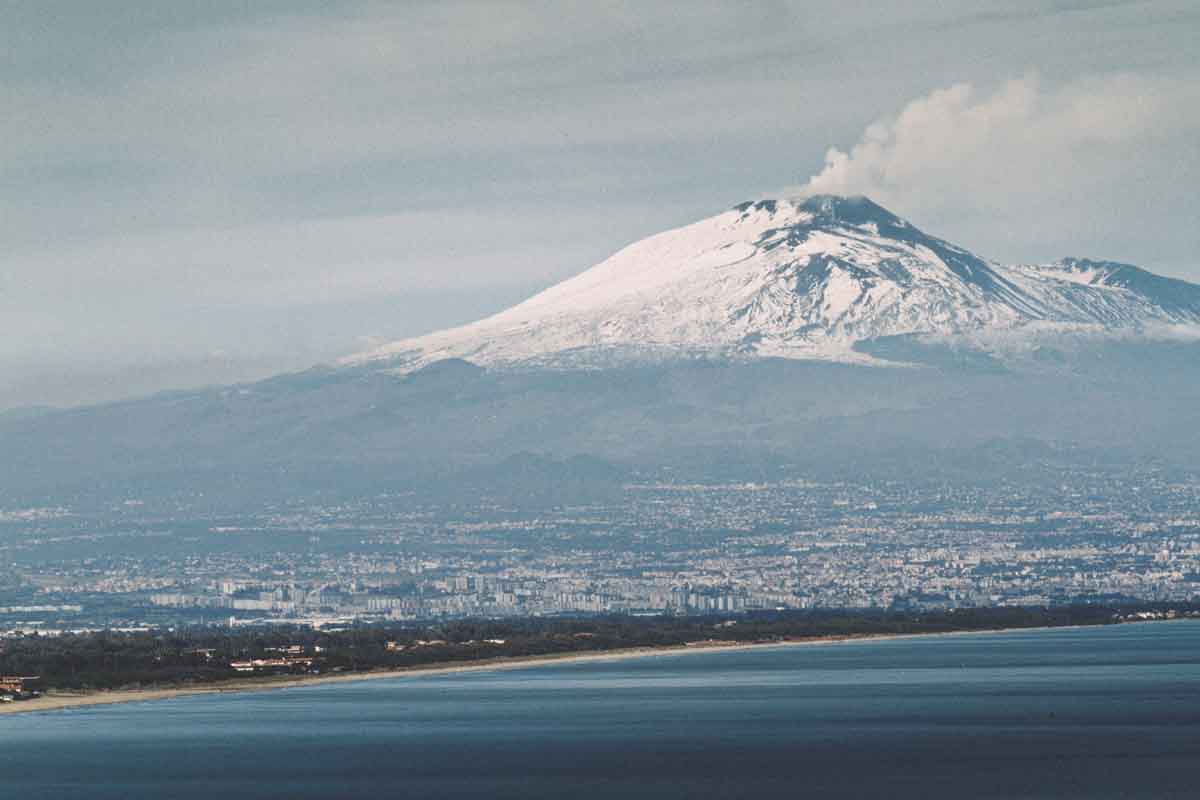
Depending on what time you get to Catania today, the first of your 14 days in Sicily should be dedicated to discovering the city.
Make sure you check out Piazza del Duomo with the Cathedral dedicated to Sant’Agata, and then climb to Badia di Sant’Agata for views over the city and Mount Etna.
Catania also has some interesting Roman ruins to explore – a theatre and an amphitheater. If you are into food, definitely pay a visit to the fish market for lunch, while adventurous gourmets should also consider dinner in Via Plebiscito, famous for restaurants specializing in barbecue horse meat.
Walking tours are also a wonderful way to get acquainted to a new destination – book your Catania walking tour here!
Where to Stay in Catania – B&B Palazzo Cerami, stylish boutique property near Piazza del Duomo offering great value and stunning interiors.
Day 2 – Etna
Today will all be dedicated to Mount Etna, Europe’s tallest volcano at 3326 meters above sea level. There are countless hikes and trails to explore, and it’s also a popular ski destination in winter.
You can explore Etna independently. Take a bus or drive to Rifugio Sapienza, about an hour’s drive from Catania at 1900 meters of altitude. From there, you can take a cable car to 2500 meters, then either hike the rest of the way to 2800 meters (the highest you’ll be allowed without a guide) or take a 4WD to take you the rest of the way, which comes with a guide.
Don’t forget to pack some warm clothes – the summit craters are at high altitude, and the weather may be freezing even in summer.
During low season you can easily arrange your trip to the Etna summit craters on the spot, but in summer, during weekends or public holidays waiting times may be long. You’re much better off organizing your trip in advance – check out this guided tour to the top of Etna, also including wine tasting!
Stay in Catania – Travel time 1 hour each way
Day 3 – Aci Castello/Acireale
You may choose to explore more of Catania today, perhaps visiting lesser-known sights like the park of Villa Bellini, or looking for street art in Quartiere San Berillo.
Otherwise, get out from the big city with a visit to Acireale and Aci Castello, two seaside villages perfect for a day trip. Start with Acireale, visit the Cathedral and two impressive palazzos, Palazzo Municipale and Palazzo Modò. You can also catch a performance of Opera dei Pupi, a traditional Sicilian style of puppet performance that is also UNESCO-listed.
In Aci Castello, don’t miss visiting the castle overlooking the sea, and if it’s summer also head to nearby Aci Trezza – Spiaggia dei Ciclopi is one of the most scenic beaches in Sicily, with some rocky islets believed to be the home of the mythological cyclops.
Stay in Catania – Travel time 45 mins each way
Day 4 – Taormina/Gole dell’Alcantara

Have you watched White Lotus season 2? If the answer is YES, I’m sure you’ll be looking forward to visiting Taormina today! Make sure you visit the Teatro Greco and take in views over Etna and the coast, or even better, get tickets to a show! Opera and ballet shows are on almost every day in summer, but tickets sell out fast.
You can also treat yourself to some shopping in Corso Umberto, and take a break at the scenic Villa Comunale Public Gardens. Taormina is fairly compact and half a day should be enough to see the main sights, giving you enough time to also visit the Gole dell’Alcantara, a scenic river canyon of volcanic origin. Check out our full guide to the Gole dell’Alcantara here to visit independently and save money!
Where to Stay in Taormina – you can blow your budget at the stunning San Domenico Palace featured in White Lotus, or somewhere simpler like A’Coffa Rooms and Breakfast, located right on Corso Umberto. However, Taormina is very expensive and busy in the high season, so you can also head back to Catania (one hour drive each way).
Book your Taormina Food & Wine walking tour here!
Day 5 – Siracusa (Syracuse)
Today will all be dedicated to Siracusa, its Greek heritage, and the island of Ortigia, connected to the mainland by a bridge and making up the historic centre of Siracusa.
Start your visit at the Teatro Greco (Greek Theatre), and then make your way to the Roman Amphiteatre, Archimede Museum and Dionysus’s Ear, an ancient cave with exceptional acoustics. All these sights are located in the Neapolis Archaeological Part west of the city, which you could visit in the morning.
Head to Ortigia for lunch, and then spend the rest of the afternoon exploring Ortigia island. Sights not to be missed include the Cathedral of Santa Maria delle Colonne, Basilica of Saint Lucia al Sepolcro, the Archaeological Museum, the Temple of Apollo, and the ancient Crypt and Catacombs of San Giovanni.
Where to Stay in Ortigia – Algilà Charme Hotel, located right in the historic centre in a Baroque palazzo with sea view and unique decor.
Travel time from Taormina – 1 hour and a half
Travel time from Catania – 45 minutes
Day 6 – Noto/Marzamemi
Leave Siracusa for another amazing destination, Noto, the best-known Baroque town in southeastern Sicily. Noto is UNESCO-listed and the most spectacular of 8 towns rebuilt in late Baroque style after a disastrous earthquake that levelled the area in 1693.
In Noto, don’t miss the Cathedral with its scenic staircase, and Palazzo Nicolaci, one of the best examples of Baroque architecture in town. For lunch, you can head to Marzamemi, a colorful village on the seaside, or relax in your hotel.
Where to Stay near Noto – Hotel Villa Giulia, located in a historic farmhouse between Noto and Marzamemi, has a swimming pool, stunning gardens, and a truly delectable breakfast.
Travel time from Siracusa – 40 minutes
Day 7 – Modica/Ragusa
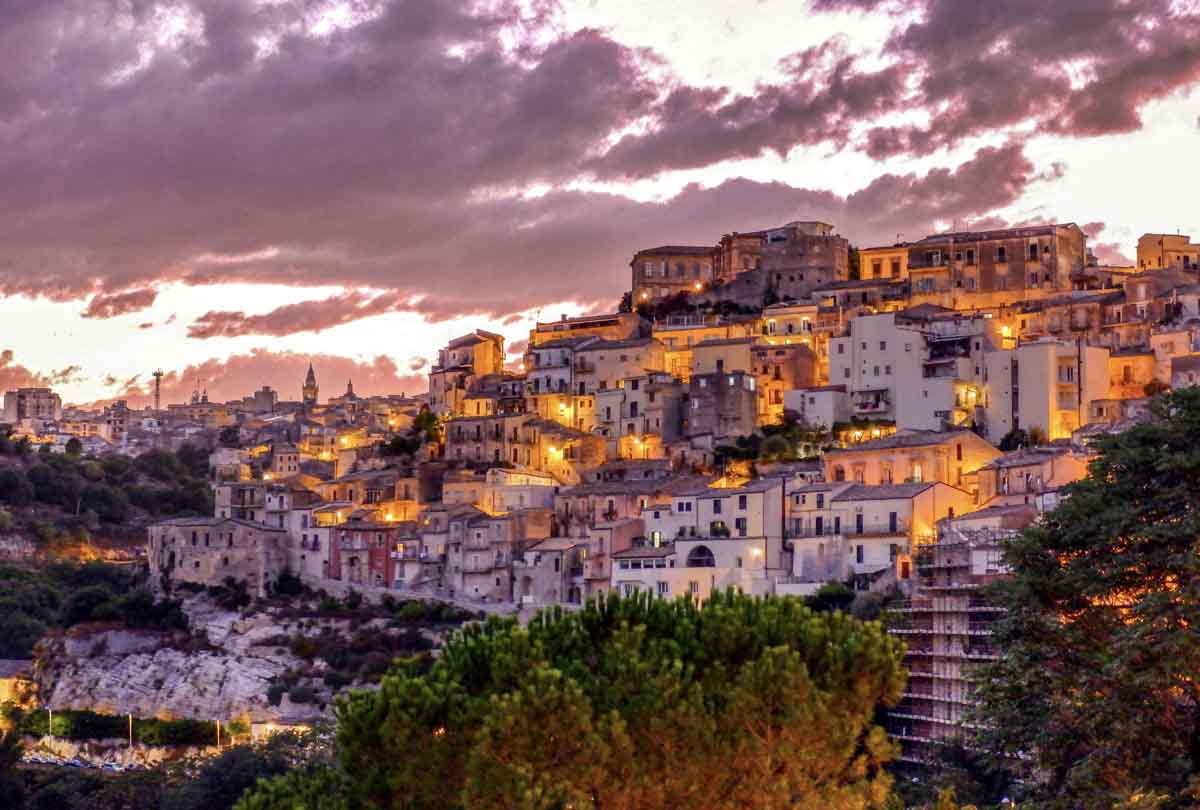
As the first of your 2 weeks Sicily trip comes to a close, you’ll slowly be travelling west, checking out two more Baroque cities – Modica, known for being the birthplace of a unique kind of chocolate, and Ragusa.
Visit Modica first, where you can’t miss a tour of the Chocolate Museum (yes, a tasting is included!), as well as the Duomo and Salvatore Quasimodo’s house. Then, drive to Ragusa where we recommend staying in Ragusa Ibla, the historic part of town on a rocky outcrop. Don’t miss the Cathedral of San Giorgio, a tour of Palazzo Arezzo Di Trifiletti with the owner, and sunset from Santa Maria delle Scale.
Where to Stay in Ragusa – AD 1768, a luxury boutique hotel near the Cathedral, in a Baroque palazzo with original decor.
Travel time from Noto to Ragusa – 1 hour
2 Weeks Sicily Itinerary – Week 2
Day 8 – Agrigento (Valle dei Templi)
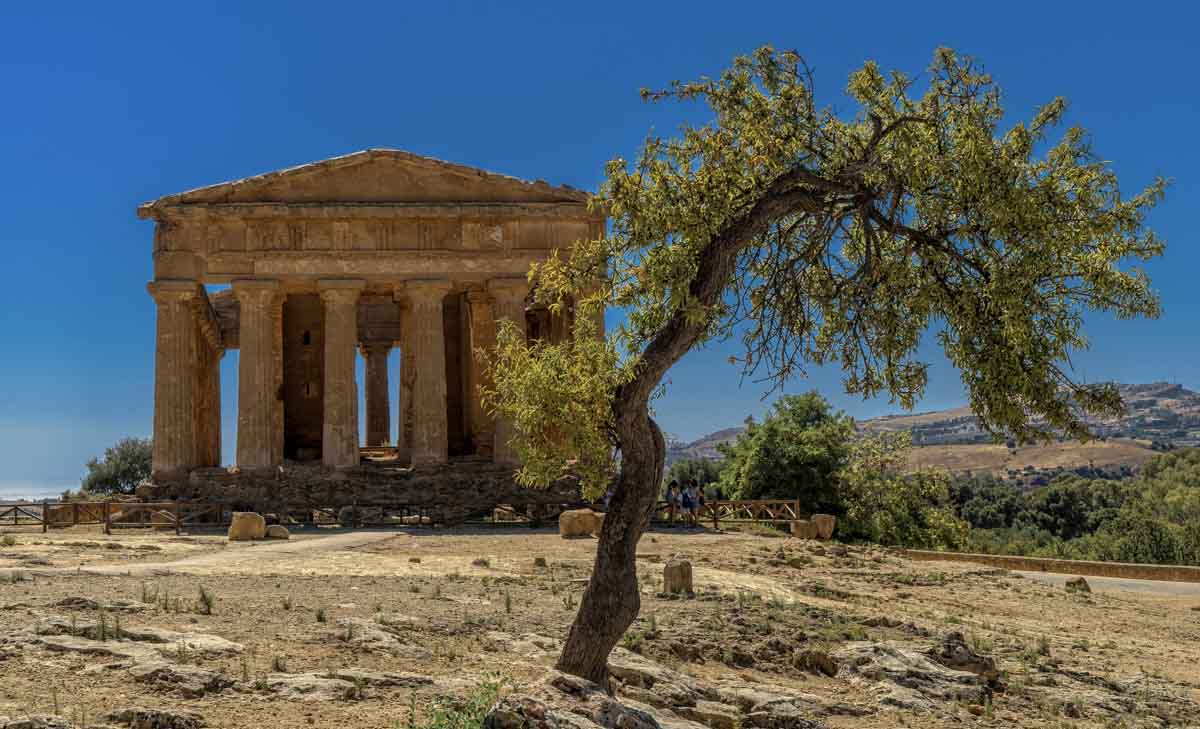
Start the day in Agrigento by visiting the incredible UNESCO World Heritage site of Valle dei Templi (meaning ‘Valley of Temples’). The ancient city was built in 580 BC and holds some of the greatest Greek architectural ruins, the best preserved are the Temple of Concordia with the laying statue of Icarus in front and the Temple of Juno (Hera’s Temple.)
However, most of the city was destroyed in the year 406 BC. Yet, some temples are still quite intact and the site is without a doubt the most impressive archaeological park in Sicily.
Make sure you get a combined ticket to visit the Archaeological Museum too. It displays different artifacts like antique vases, marble statues, and Greek and Roman sarcophagi.
After lunch, spend the rest of the day walking around the medieval old town. Among the top attractions is the Holy Spirit Monastery where nuns sell delightful almond cakes. You might also want to step into the 11th-century San Gerlando Cathedral. While it looks modest on the outside, there is nothing modest about the colorful frescoes and detailed golden decorations on the inside.
Alternatively, you can go to discover the Scala dei Turchi which is a 20-minute drive from Agrigento. The natural staircase carved into the white limestone rock by the wind and sea is an incredible site and nature lovers will highly appreciate it.
Where to Stay in Agrigento – Doric Bed Boutique Hotel, steps away from the Valley of the Temples with comfortable rooms, a restaurant and swimming pool.
Travel time from Ragusa – 2.5 hours
Day 9 – Selinunte/Segesta
Day 9 of your 2 weeks Sicily journey and you will uncover yet another splendid archaeological park in Selinunte, which stretches 270 hectares across the Sicilian countryside along the glittering coastline overlooking Tunisia. In fact, it is the largest archaeological park in Europe and likely one of the most picturesque too.
Dotted with Greek temples hardly touched since they were built around 2500 years ago, old city walls, and ancient streets where you can easily imagine Greek horse carriages would pass when the city was at its full glory, Selinunte is a must-see. There are still excavations, and the temples are given letters as names, A, B, C, D, E, F, G, and O.
Temple G is the most impressive of them all, with 46 columns across the 113 meters long and 54 meters wide temple that was never completed. It is believed that it was dedicated to Apollo. Nearby, you find the most complete temple, E, which was likely dedicated to Hera. The temple was restored in the 1950s. Temple C is the oldest, dating back to the first half of the 6th Century BC, also believed to have been dedicated to Apollo.
If you have time and want to see more temples, you can also head to Segesta, about 45 minutes away. There you can see the impressive Greek Doric temple of Segesta which was never fully completed, but the exterior with its giant columns gives a feeling of the grandeur it would have had if its construction was finalized. In Segesta, you will also find a Roman Theater dating back to the 4th, 3rd, and 2nd years BC. It once seated 4000 spectators and is still today in use during the summer months.
Where to Stay in Selinunte – Momentum Wellness Bio Resort, a stylish property surrounded by olive trees just 2 km from the archeological park, with infinity pool and a spa.
Travel time from Agrigento – 1.5 hours
Day 10 – Trapani
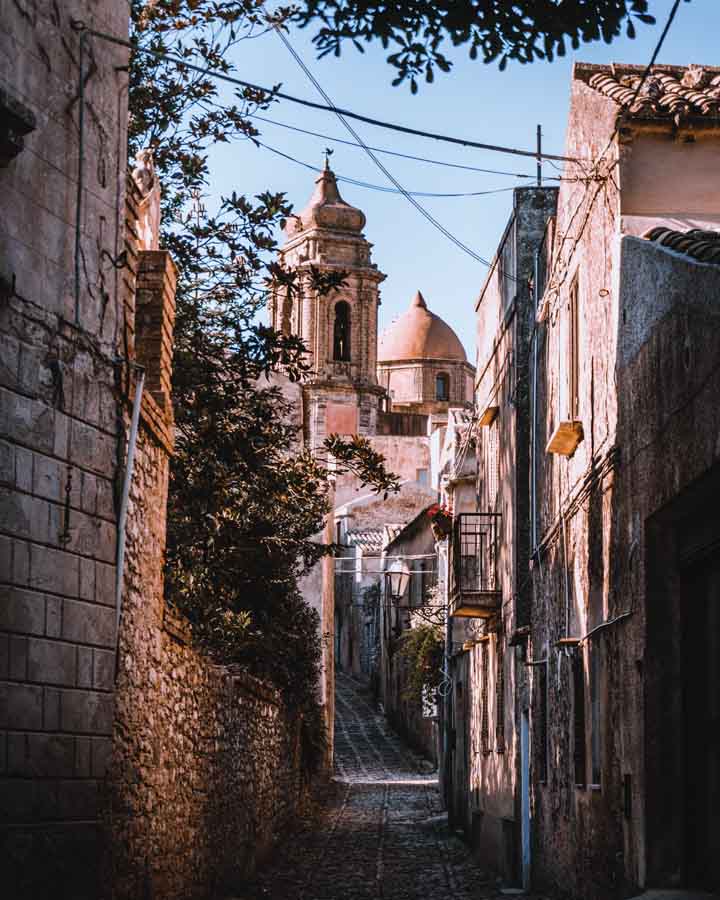
Trapani is a vibrant port city with a history going back to the First Punic War. Among the biggest attractions are the 15th-century salt pans and traditional windmills right outside the city. Though salt production is not like it used to be, it is worth seeing the unique salt heaps looking like little cave dwellings as they are covered in tiles to avoid the salt from traveling with the wind. It is a good opportunity to buy some salt too.
Take some time walking around Trapani Old Town and grab a bite to eat in one of the many traditional restaurants and cafes. Then you can walk along the promenade to the 14th-century Ligny Tower which sits on the tip of the pier. Inside, you find the Museum of Prehistory.
Trapani’s San Lorenzo Cathedral is remarkable with majestic arches and colorful frescoes. It dates back to the early 1400s but has undergone restoration work several times since. Besides the cathedral, it is worth visiting Chiesa del Collegio which has a light and elegant interior, Santa Maria dell’Itria, and Santa Maria del Gesù churches.
Finally, visit the Museo Regionale Pepoli where you will marvel at archaeological finds and architectural remains inside what once was the Santuario di Maria SS di Trapani.
Where to Stay in Trapani – Central Gallery Rooms, a great midrange property with spacious sea view rooms and common spaces in a 19th-century palazzo.
Travel time from Selinunte – 1 hour
Day 11 – Erice
Spend the day in the enchanting medieval hilltop town of Erice, crowned by its castle, Castello di Venere (Castle of Venus) which is also the most prominent attraction that you must visit. The castle was built on top of the ruins of the Temple of Venus in the 12th century. The imposing exterior is merely a shell surrounding the ruined interior where mostly the foundations are left. Among the remains, you will find the Well of Venus, which is said to be where goddesses and priestesses would have a bath in purifying water.
There is also the Wall of Daedalus which legend says was built by the God himself as part of the Temple of Venus. Next to the castle, you also find the Torretta Pepoli.
Erice is also known as the Città delle Cento Chiese (city of a hundred churches), so there is no surprise that you can spend hours stepping into different chapels and churches. Nonetheless, you should not miss out on Duomo di Erice and climb its 13th-century clock tower. There is also a museum in the church where you can see religious artwork.
Further, take a stroll in Erice’s English-style gardens, Balio Gardens, where you will also find the Balio Castle and exceptional views of the valley.
Stay in Trapani – easy to reach by bus, taxi, or cable car.
Day 12 – Riserva dello Zingaro
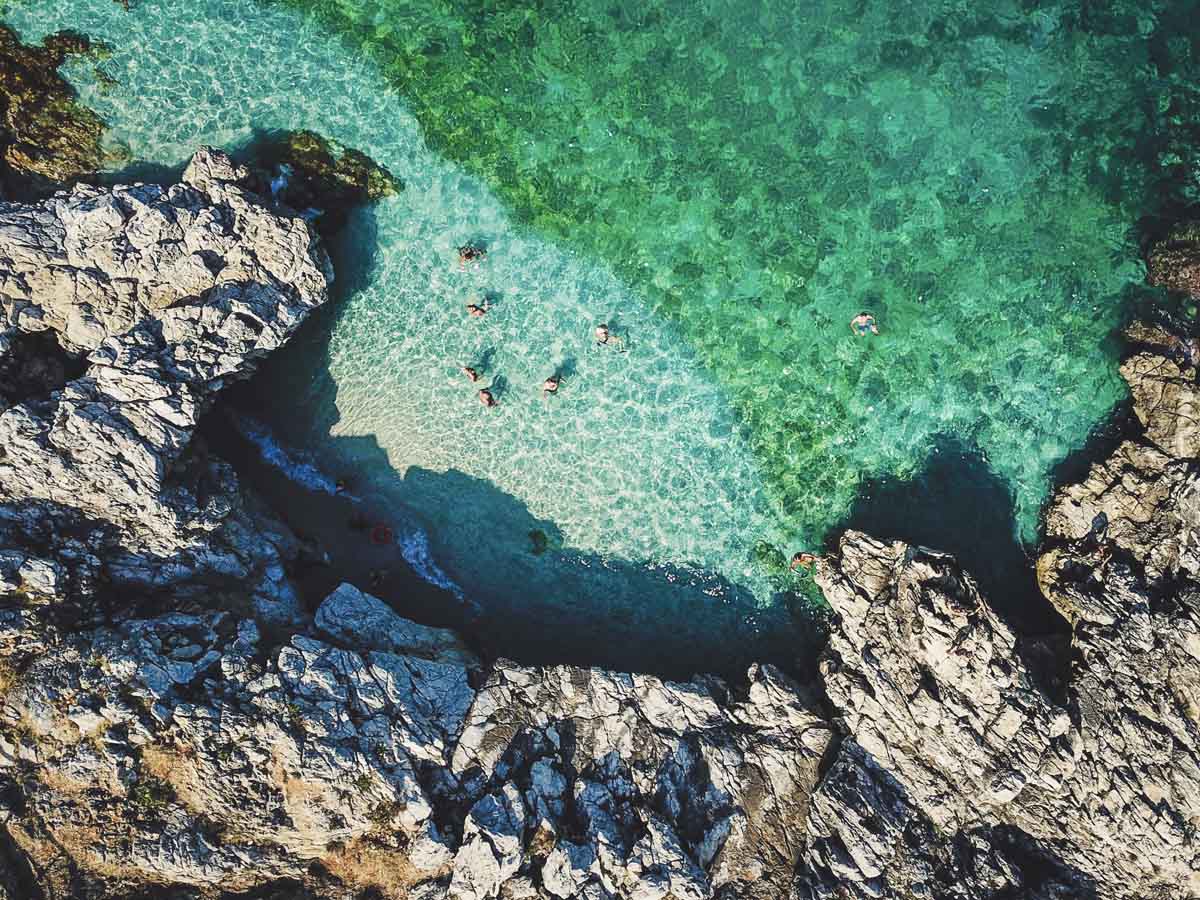
Riserva dello Zingaro is one of the most breathtaking natural areas in Sicily and you can’t miss during your 2 weeks Sicily trip. Not far from the village of San Vito Lo Capo, a rugged and wild coastline meets turquoise clear waters with picturesque coves and secluded beaches below and a wealth of hiking trails above. It is a lovely place for bird lovers as you can see different big birds like eagles and peregrine falcons.
To enjoy the day at its fullest, wear good hiking shoes, bring lunch, and a lot of water as you will not find it once you enter the nature reserve. If you consider going for a dip in any of the coves, bring swimwear and a towel too. There are different hiking routes to choose from, and you will get a map with each one of them at the entrance.
For incredible coastal views, walk the 7 kilometers long coastal trail connecting the two entrances. La Punta della Capreria is the most popular cove to go swimming in as it is easy to access. Other coves like Cala Berretta and Cala dell’Uzzo are not so crowded, but in turn, it takes more effort to reach them.
If you find it too hot for hiking, you can go on a boat tour to explore the emerald coves, and beaches, and snorkel in the crystal-clear water.
Where to Stay in San Vito Lo Capo – Ricordi Siciliani, accommodation in a Sicilian home with large garden steps away from the beach, offering tasty breakfasts
Travel time from Trapani – 50 minutes
Day 13 – Palermo

Palermo is known for being the world’s most conquered city throughout history, so not surprisingly, there is a lot to explore. There is also a myriad of UNESCO World Heritage Sites in Palermo. Start your walk from the impressive Baroque square Quattro Canti and step inside the Church of San Giuseppe dei Padri Teatini which is covered in dazzling frescoes.
Continue to the Piazza Pretoria where you will be amazed by the immense 16th-century Praetorian Fountain. Also on the square, you find one of the most impressive churches in Sicily, the Church and Monastery of Santa Caterina d’Alessandria. If you think it looks ordinary from the outside, wait until you step inside where it hides a sensational treasure of 16th-century Sicilian Baroque – colored marble, frescoes, carved arches, and gold all form a masterpiece that will make your jaw drop.
Besides Palermo Cathedral, another church that will take your breath away is Santa Maria dell’Ammiraglio which is a fantastic mishmash between Arabic and Norman architecture.
The Palace of the Normans and Cappella Palatina are among the highlights that you must see in Palermo. The opulent palace and UNESCO World Heritage Site is said to have been home to numerous rulers of Sicily since the Norman era. Finally, make it to the Teatro Massimo, which was the grandest opera house in Italy at the time it opened at the end of the 1800s.
Where to Stay in Palermo – Ai Tre Mercati, suites with balcony and fresh pastries for breakfast in one of the coolest parts of Palermo.
Travel time from San Vito Lo Capo – 1 hour 20
Day 14 – Monreale/Cefalù
Start your day last day on this 2 weeks Sicily itinerary by discovering the charming town of Monreale. The most prominent landmark and UNESCO World Heritage Site that you must see is Monreale Cathedral. With a splendid interior of Arab and Baroque styles and some of the most important Byzantine mosaics in the world in an impressive coexistence that will impress anyone.
Before you continue to Cefalù, take in the impressive views of the 102-meter-long cathedral from Piazza Vittorio Emanuele II.
Have lunch by the beach on your last day in Sicily in the picture-perfect coastal town of Cefalù before exploring. Then, head to the Bastione Capo Marchiafava to take in the glittering sea views. If it is hot, you can go for a dip in any of the natural pools nearby.
It is also worth hiking the 45 minutes to Salita Saraceni staircase to La Rocca, where you can see the ruins of an old Roman citadel. If you do not feel like hiking and would rather take it easy on your last afternoon, Cefalù is a splendid place to relax on the beach too.
